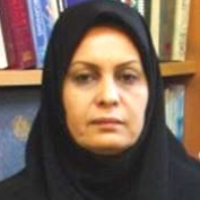Multifunctional Biofertilizer from Pseudomonas Putida PT: A Potential Approach for Simultaneous Improving Maize Growth and Bioremediation of Cadmium-polluted Soils
Pollution of agricultural soils with heavy metals is a serious problem in the world. The aim of this study was to produce a multipurpose biofertilizer which can remove cadmium from polluted soils as well as enhancing plant growth.
To study the ability of Pseudomonas putida strain PT for establishing an effective relationship with plants, the effects of some compounds present in plant root exudates were examined on chemotaxis, growth, and biofilm formation of bacteria. Pot experiments were performed by using biofertilizers prepared from P. putida PT by two different methods including seed immersion and immobilization of the bacterial cells on rice bran as carrier. After measuring the fresh weight and dry weight of each plant, cadmium concentrations in plant aerial tissues and soil in the presence and absence of biofertilizers was measured by atomic absorption spectrometry.
Results showed positive chemotactic responses of P. putida PT to sucrose, mannitol, glucose, alanine, histidine, tryptophan, succinic acid, malic acid, and citric acid. Succinic acid, mannitol, and sucrose promoted both biofilm formation and growth of P. putida PT. Malic acid enhanced only the bacterial growth, whereas histidine, tryptophan and glucose promoted biofilm formation. Both biofertilizers enhanced the fresh and dry weight of maize plants about 2-fold. The maximum reduction of cadmium concentration in the soil was observed in the presence of immobilized cells (97.57%), followed by the inoculation of bacterial cells by seed immersion method (68.67%). Cadmium concentration in plants was decreased from 6310 ppb in control experiment to 885 ppb and 2917.5 ppb in the presence of biofertilizers produced by cell immobilization and seed immersion techniques, respectively. Discussion and
Using these fertilizers is an approach to promote maize growth in cadmium contaminated soils along with decreasing metal concentrations in soil and plant.
-
Enhanced nitrogen removal by a heterotrophic nitrifying-aerobic denitrifying bacterial consortium with potential for the treatment of high-strength ammonium wastewater
Noushan Hatami, *, Rasoul Shafiei
Journal of Microbial Biology, Winter 2024 -
Enhancement of Salinivibrio Proteolyticus Strain AF-2004 Protease Thermostability Using Site Directed Mutagenesis
Matia Sadat Borhani, *
Journal of Molecular and Cellular Research,


